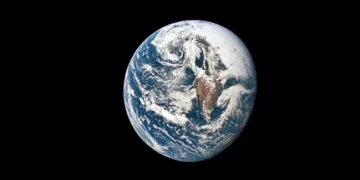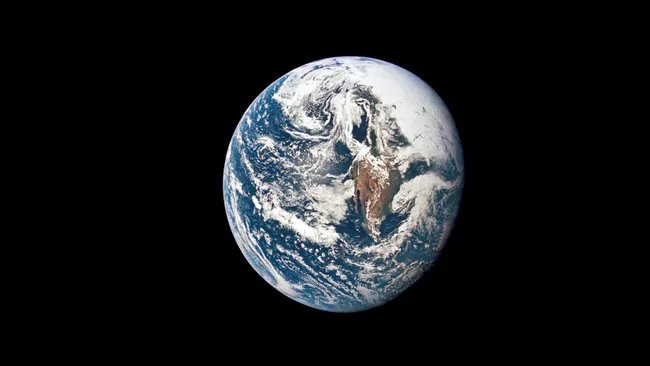Astronomers have made a groundbreaking discovery: a super-Earth, HD 20794 d, located just 20 light-years away, could be one of the closest and most promising exoplanets for studying conditions suitable for life. This planet, orbiting a sun-like star, lies within the habitable zone, meaning it could potentially sustain liquid water on its surface—a key ingredient for life as we know it.
The Discovery of HD 20794 d
Scientists first detected HD 20794 d in 2022 using the HARPS (High Accuracy Radial Velocity Planet Searcher) spectrograph at the La Silla Observatory in Chile. However, the initial findings were inconclusive, as the signal could have been caused by various factors such as stellar activity or instrumental noise. To verify the planet’s existence, astronomers conducted years of follow-up observations using two of the world’s most advanced spectrographs: HARPS and ESPRESSO. By combining data collected over two decades, researchers confirmed the existence of HD 20794 d.
This discovery marks a major step forward in exoplanetary science. Unlike many previous detections, this planet was found through precise spectroscopic methods, which analyze tiny shifts in light from the host star caused by the gravitational tug of an orbiting planet. The confirmation process demonstrates the growing precision of modern astronomical instruments, paving the way for detecting more Earth-like worlds in the future.
What Makes HD 20794 d Special?
One of the most exciting aspects of HD 20794 d is its location in the habitable zone of its star. The habitable zone, often referred to as the “Goldilocks zone,” is the region around a star where conditions might allow for the presence of liquid water. Since water is essential for life as we understand it, this makes HD 20794 d a prime candidate for further study.
Another intriguing feature of HD 20794 d is its size and mass. With a mass approximately six times that of Earth, it falls into the category of a “super-Earth”—a type of exoplanet that is larger than Earth but smaller than gas giants like Neptune. Scientists believe that super-Earths may offer some of the best chances for habitability, as they could retain atmospheres and support stable climates over long periods.
However, one challenge with HD 20794 d is its elliptical orbit. Unlike Earth’s nearly circular orbit, which helps maintain a stable climate, HD 20794 d’s path around its star fluctuates between the inner and outer edges of the habitable zone.
The Science Behind Finding Habitable Exoplanets
Finding planets like HD 20794 d requires cutting-edge technology and innovative methods. The primary tool used in this discovery was the radial velocity method, which detects tiny wobbles in a star’s movement caused by the gravitational pull of an orbiting planet. This technique is particularly useful for identifying planets that are too small to be seen directly.
The confirmation of HD 20794 d also highlights the importance of long-term astronomical surveys. By analyzing decades of data, scientists can separate genuine planetary signals from background noise, ensuring that discoveries are accurate.
What Does This Mean for the Search for Life?
The discovery of HD 20794 d is a significant milestone in the search for life beyond Earth. While we do not yet know if the planet has an atmosphere, ongoing and future missions will aim to study its atmospheric composition. Scientists hope to detect biosignatures—chemical markers that could indicate the presence of life. Key biosignatures include oxygen, methane, and water vapor, which can reveal whether biological processes are occurring on the planet.
Several upcoming missions, such as the Extremely Large Telescope (ELT) and NASA’s Habitable Worlds Observatory, will be able to analyze the atmospheres of exoplanets like HD 20794 d in unprecedented detail. These instruments will use spectroscopy to break down light from the planet’s atmosphere, identifying elements and compounds that could suggest biological activity.
Additionally, space-based telescopes such as the James Webb Space Telescope (JWST) and the upcoming Large Interferometer For Exoplanets (LIFE) will help refine our understanding of exoplanetary climates and surface conditions.
What Can We Learn from HD 20794 d?
Beyond the search for extraterrestrial life, studying HD 20794 d can provide valuable insights into planetary formation and evolution. By comparing this super-Earth to planets in our own solar system, scientists can learn more about how planetary systems develop and what factors contribute to habitability.
Understanding HD 20794 d’s climate, geology, and atmospheric composition will also help refine models used to predict the conditions on other exoplanets.
Additionally, the discovery reinforces the idea that habitable planets may be more common than previously thought. If HD 20794 d is capable of sustaining life, it suggests that many other nearby stars could also host potentially life-supporting worlds, increasing the chances of finding extraterrestrial life within our lifetime.
The Future of Exoplanet Exploration
The confirmation of HD 20794 d is just the beginning. The next steps in studying this planet will involve detailed atmospheric analysis, searching for signs of life, and refining models of planetary habitability. As technology advances, astronomers will continue to improve their ability to detect and characterize distant worlds.
The growing number of exoplanet discoveries also underscores the importance of international collaboration in astronomy. Teams of scientists from different institutions and countries work together to share data, refine techniques, and advance our understanding of the universe.
Conclusion
The discovery of HD 20794 d is a monumental achievement in the field of exoplanet research. It offers a promising new target for studying habitability, atmospheric conditions, and the potential for life beyond Earth. While many questions remain, this super-Earth represents a significant step toward finding other habitable worlds.
Reference:
N. Nari et al, Revisiting the multi-planetary system of the nearby star HD 20794. Confirmation of a low-mass planet in the habitable zone of a nearby G-dwarf, Astronomy & Astrophysics (2024). DOI: 10.1051/0004-6361/202451769



















